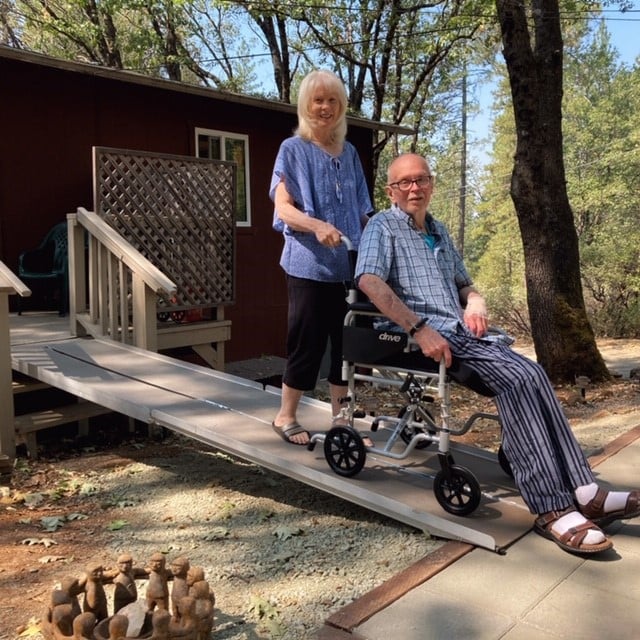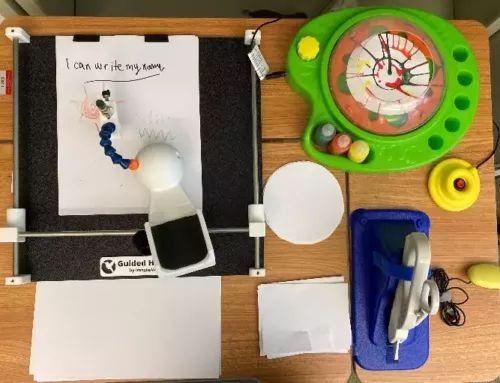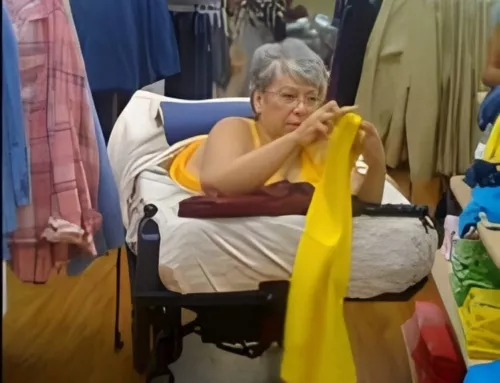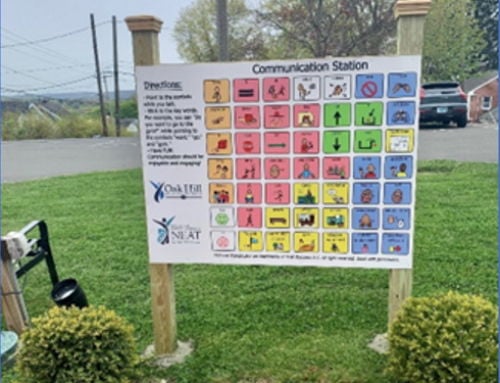AT for Gerald’s Hard Year

This is an important story to share. While it may not be a “Long COVID” story, it is a sobering COVID impact story. Thank you to LATAN, the Louisiana Assistive Technology (AT) Act Program, for bringing Gerald to AT3 Center’s attention.

Gerald was hospitalized for approximately eight months due to complications from COVID-19. Medication caused severe loss of muscle mass and weakness. The clinical term is “critical illness myopathy,” a disease of limb and respiratory muscles observed during treatment in the ICU.
“Health economists warn that, as with tuberculosis, HIV, and other diseases, morbidity would stalk mortality,” writes Laura Spinney in Nature about COVID-19. Two years into the pandemic, stories such as Gerald’s are emerging to wake the general public to the risks beyond COVID-19’s death toll.
Spinney is the author of Pale Rider: The Spanish Flu of 1918 and How it Changed the World. She writes that many people believe COVID-19 will kill a minority of people and leave most everyone else to recover quickly with an updated immune system. But “the longer the pandemic drags on, the harder it is to maintain that fiction,” she says.
Gerald’s recovery extended well beyond his eight-month hospital stay. He needed to build back muscle strength. He needed the stamina that many people take for granted: muscles for sitting upright, then muscles for standing, and, finally, for walking.
His physical therapists looked for specialized equipment that he could use in the hospital and then bring with him home to continue his recovery.
They found it with LATAN.
A device loan of a standing frame helped Gerald build back muscle mass. It helped with muscle control and balance. His therapists report he is now able to use a walker inside his home. He is now able to use the bathroom independently, shave and brush his teeth.
Spinney observes that we owe polio survivors Judith Heumann and Ed Roberts for advocacy and leadership that helped see the passage of the Rehabilitation Act of 1973 and the Americans with Disabilities Act of 1990. The Technology-related Assistance Act of 1988, the precursor to the Assistive Technology Act, also saw passage in that era’s push for disability rights. The rights and services COVID-19 survivors have and will have access to came about, in part, from the lessons learned from past pandemics.
All AT Act Programs provide device demonstration and device loan services for free or at very little cost. In Louisiana, equipment may be borrowed for up to 90 days for a small fee. Anyone with a reason to borrow equipment may do so, including family members, friends, service providers, and others.
It’s time to pay attention to what COVID-19 survivors need. AT3 Center encourages anyone struggling to recover from a debilitating condition consider their State or Territory AT Act Program. What tasks do you struggle with? What goals are you working toward? AT Act Programs have experience assisting people of all ages across the full spectrum of disabilities to identify devices and services that may help.
Learn about equipment from your AT Act Program. Discuss your needs broadly. Proof of a disability is not required. Find your State or Territory AT Act Program.
Learn more: AT Act Programs Support “Long COVID”
Monthly Blog Digest
Search the blog
State AT Program Blogs
California
Florida
Indiana
Kentucky
Louisiana
Maryland
Massachusetts
Michigan
Montana
North Carolina
North Dakota
Utah
State AT Program Blogs
The AT3 Center, the Association of AT Act Programs (ATAP), and the Administration on Community Living (ACL) make no endorsement, representation, or warranty expressed or implied for any product, device, or information set forth in this blog. The AT3 Center, ATAP, and ACL have not examined, reviewed, or tested any product or device hereto referred.








